This is the first instalment of a brief history of Group 9 Rugby League.
Rugby League emerged in the Riverina in 1911, at West Wyalong. By 1921 it had replaced Union throughout the southwest. The NSW Rugby League, recognising the need to join up clubs and to organise this rapidly expanding sport, proposed prior to the 1922 season to divide the rural parts of the state into twelve groups. Group 9 was to include the teams Harden, Wagga, Cootamundra, Gundagai, Tumut, Temora, Barmedman, Wyalong, West Wyalong, Mildil, Ariah Park and Ardlethan.
| 1922 | 1923 | 1924 | 1925 |
| 1926 | 1927 | 1928 | 1929 |
It was further proposed to have a competition between all the Groups in Sydney during ‘Country Week‘ in June. Bob Aldridge from Temora was designated as the selector for Group 9. However the Group existed in name only as no meeting to constitute the Group had been held. Aldridge found little interest from the other clubs in forming his representative team. In the end a combined team from Group 8 – centred on Goulburn – and Group 9 was selected under the rubric of ‘Southern Districts’. Group 9’s contribution were just four players, all from Temora; Jack ‘Slender’ O’Leary, Cyril ‘Whisky’ Meehan, Ernie Green and McLaughlin. Defeated 31-5 by North Coast the Sydney event was ignored by the local newspapers.
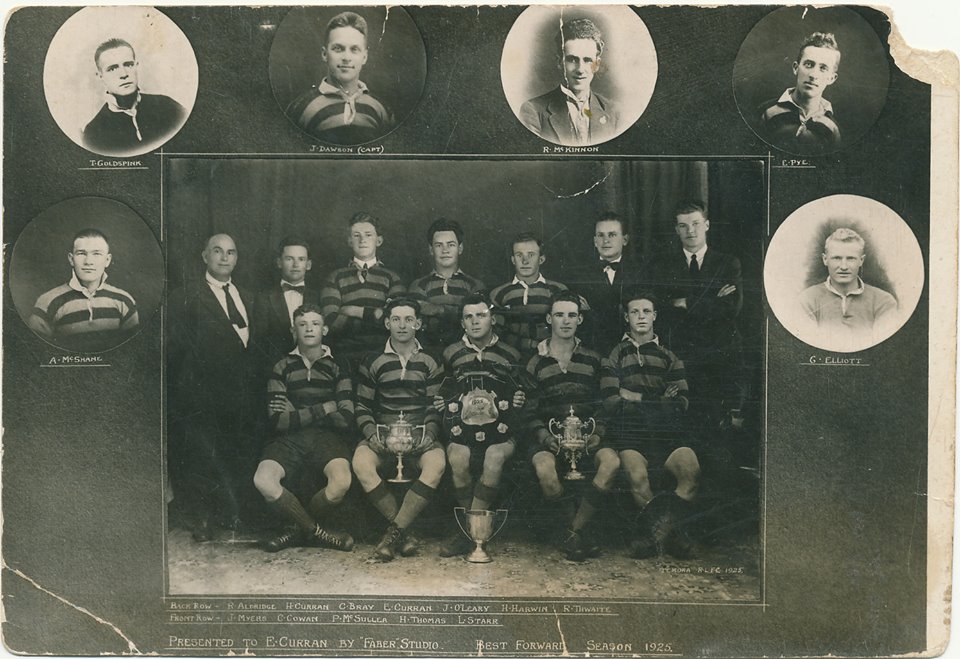
Bob Aldridge and a Temora team from 1925: Back Row – Bob Aldridge, Hec Curran, Charlie Bray, Eric Curran, Jack O’Leary, Harold Harwin, Rex Thwaite. Front Row – Jack Myers, Col Cowan, Peter McSullea, Harold Thomas, Les Starr. Inserts – Artie McShane, Tom Goldspink, John Dawson (Captain/Coach), Robert McKinnon, Ernie Pye, George Elliott. Source: Temora Dragons Rugby League Club via Facebook.
So in 1922 each town and village had a very local perspective on football. There were a myriad of challenge cups, often short-lived, put up for visiting sides to contest and possibly take away. However teams didn’t travel far. Even in the already popular Maher Cup, the longest distance travelled by the end of 1922 was the 60 miles from Tumut to Cootamundra. Play was irregular, with some sort of game usually on Wednesday afternoons, when businesses would close, and often another one either on Saturday or Sunday. The season was short – at its longest from late May to early September.
As Harden-Murrumburrah was determined by the NSW Rugby League to be the headquarters of Group 9 in April 1923 the Harden secretary wrote to all clubs in the area to invite them to a meeting. The main purpose of the meeting was to organise selection trials so that this year a properly representative team could contribute to the Southern Districts side for Country Week. A four hour plus foundation meeting was thus held at the Grand Hotel, Harden on Thursday 26 April finishing at 12.20am. It was agreed to divide the group geographically into three sections for the trials:
Section 1 – Harden, Murrumburrah, Binalong, Young, Wambanumba, Monteagle and Bendick Murrell.
Section 2 – Cootamundra, Junee, Wagga, Gundagai, Tumut and Adelong.
Section 3 – West Wyalong, Barmedman, Griffith. Temora, Leeton, Ariah Park and Mildil.
This all got off to a rather inauspicious start, when, after three of the club delegates from villages close to Harden and Young had left the meeting to catch their branch line train the remaining delegates narrowly passed a resolution to move the headquarters to Cootamundra. While this may have made good geographical sense, the motion would have been lost if all the delegates had been able to remain. Thus the bad feelings that often erupted between Young and Cootamundra were established on day one.
After the selection trials the following team was chosen to represent Group 9 against Group 8 at Goulburn : Fullback: Bill Lesberg (Cootamundra); three-quarters; Eric Weissel (Cootamundra), W. Collier (Barmedman), Pickard and C. McVeigh (Young); halves, Charlie Carthew (Junee), Tom Peck (Binalong), Jim Cornett (Leeton); forwards Dadie Quinlan (Cootamundra), Leo ‘Curly’ Joyce (Young), Bill Brogan (West Wyalong), Glen King (Barmedman), A. Miller (Harden), and Ollie Armour (Junee).
While Group 9 wanted the game played on a Wednesday, Goulburn insisted that only Saturday was suitable. For whatever reason the team that took the field had six changes from that originally selected and needed a local pickup to fill in for the brilliant kicker Lesberg who couldn’t make it at the last minute, thus: fullback; Bert Wilson (Goulburn); three-quarters, J. Horne and J. Green (Leeton), Eric Weissel (Cootamundra) and W. Collier (Barmedman); halves, Charlie Carthew (Junee) and Jim Cornett (Leeton); forwards, Dadie Quinlan (Cootamundra), Glen King (Barmedman), Ollie Armour (Junee), Bill Brogan (West Wyalong), George Bacon (Barmedman) and B. Berecry (Griffith). They lost 29-13 and only Weissel, Cornett, Quinlan and Brogan were selected to represent Southern Districts in Sydney.
This time Southern Districts defeated the North Coast, 19-7. Weissel and Brogan were then chosen to play for NSW Country against Newcastle.
Under the rules written up by Ted Maher a team holding the Cup two years in succession could keep it. Cootamundra’s stunning side of 1923 achieved this. However the Cup was already a major talk of towns far and wide and too valuable to be placed in the trophy cabinet for posterity. So Cootamundra made up new rules and put the Cup back into play – for what would end up being another 48 years.
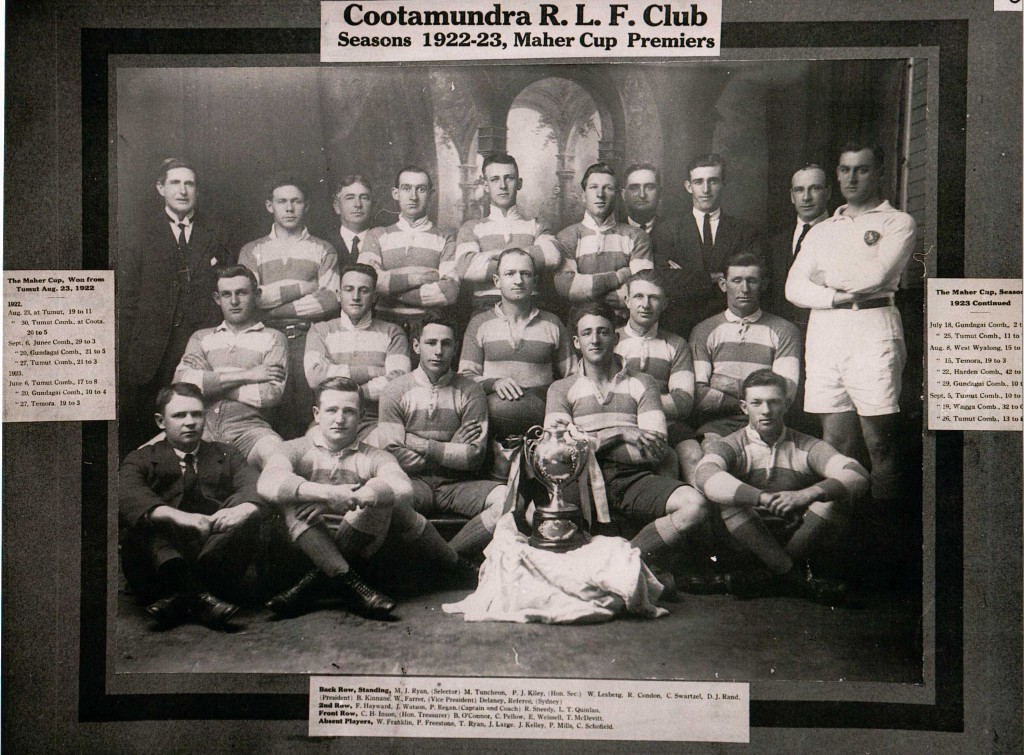
The Cootamundra team of 26 Sep 1923 which won the Maher Cup outright. In 1924 they put the money spinner back into play. Back: Left-Right; M.J. Ryan (Selector), Mick Tuncheon, P. J. Kiley (Hon Sec), Bill Lesberg, Bob Condon, Charlie. Schwartzel, D.J. Rand (President), Bernie Kinnane, W. Farrer (vice President), Delaney, Referee (Sydney) – 2nd Row: Fred Hayward, Jack Watson, Phil Regan (Captain & Coach), Ray Sheedy, L.T. ‘Dadie’ Quinlan – Front Row: C.H. Inson (Hon Treasurer), Brian O’Connor, Curtis ‘Dick’ Pellow, Eric Weissel, Tom ‘Dipper’ McDevitt – Absent players: Wal Franklin, Phil Freestone, Tom Ryan, J. Large, J. Kelley, P. Mills, Charlie Schofield. (These would have been players who didn’t play in the particular match but contributed in other games)
This year the Southern Districts team was selected in a match which christened Fisher Park between teams billed as ‘Cootamundra’ and ‘Goulburn’. While the Goulburn team was a composite from the various clubs in Group 8, the Coota team was very much their victorious Maher Cup team plus fullback Bob Boyd from Stockinbingal and Gerry Crowe from Gobarralong near Gundagai. Weissel was brilliant and Coota won 16-3. Seven Coota players, plus Crowe and Boyd were selected to go to Sydney. In Country Week they went on to beat North Coast 14-12 and Northern Division 29-8. According to the Gundagai Independent Eric Weissel had his jaw broken, although only six days later he played in the Group’s biggest game to date.
This big event was the visit to Cootamundra by the English team on 27 May, attracting between 5000 and 6000 spectators. England won 31-4 and went on to defeat Australia in the first test 22-3 at the Sydney Cricket Ground four weeks later.
The Maher Cup had by 1924 emerged as the premier local league fixture. In a way it was just another challenge cup of the type that businessmen, particularly publicans and cafe owners, sponsored for their towns and villages throughout the area. But the Maher Cup quickly garnered intense interest from Tumut to Wyalong and all places in between.
The Cootamundra Herald above listed the gates from the Coota team’s home games for the season. Most of these matches involved the Maher Cup, but there were also Farrar Cup matches with West Wyalong (with gate takings larger than all but one of the Maher Cup matches) and Gundagai, while friendlies were hosted with Balmain, Everleigh Loco and Berrima.
West Wyalong’s year was more typical of Group 9 teams in that they played for a great variety of challenge cups. The Farrar Cup, originally put up by a West Wyalong publican, was lost twice to Cootamundra, they withstood three challenges for Leeton’s Tulk Cup which they had captured, played two matches in the Southwest District Championship Shield, three Crowley Cup matches with Temora, four Burge Cup matches with Barmedman, defeated Forbes in two friendlies and had their first game ever against Griffith.
Such was Group 9 football in the days before a regular weekly league ladder competition.
Football was being developed into a semi-professional game with top ranked representative players coming to the bush to take up paid captain-coaching roles at: Barmedman – Clarrie Horder; Cootamundra – Phil Reagan (now in his fourth year), Grenfell – Frank Burge; Gundagai – Alex Johnston; Temora – Jack Dawson, Tumut – ‘Bluey’ Watkins, West Wyalong – Dick Vest, and at Young – Joe Mansted.
This year the Southern Districts team for Country Week was composed only of Group 9 players and most were from Cootamundra. The team being: fullback; Bill Lesberg (Coota); three-quarters, Tom Ryan (Coota), J. Mitton (Wagga), Sid Hall (Young), Jack Watson (Coota), Eric Weissel (Coota), Phil Regan (Coota), Charlie Schwartzel (Coota), Clem Robinson (Coota), Dadie Quinlan (Coota), Ray Sheedy (Coota), ‘Curly’ McWhinney (Young) and Jack Wunsch (Wagga). They lost to Far North Coast 20-15. [One report has Schofield scoring a try]. In the second match they trounced Northern 26-8 with Schofield replacing Watson, and Cootamundra’s Curtis Pellow replacing Schwartzel. Weissel, Wunsch, Lesberg and Sid Hall were selected in the Combined Country team to play the New Zealand tourists.
Cootamundra organised what was to be the first Group 9 annual conference. The primary purpose was to put in place a ‘Board of Control’ to formally develop and manage rugby league in the area. On 5 August delegates came representing Barmedman, Cootamundra, Griffith, Gundagai, Harden, Junee, Leeton, Marengo, Monteagle, Temora, Tumut, Wagga, West Wyalong, Yenda and Young.
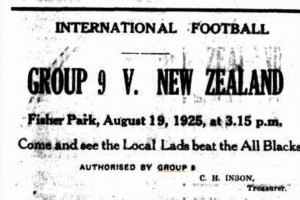 The first business was whether Cootamundra would be the headquarters for Group 9. The elected secretary, Fred Cahill of Young, considered that his town was larger and thus should be the capital. He lost. Cahill suggested that a regular Group 9 competition be established from 1926 – a battle he would spend many years doggedly pursuing. Not for the last time discussion was deferred on the matter. Tom O’Farrell of Wagga was elected president, a constitution drawn up, affiliation fees fixed, auditors appointed and New Zealand invited to play on 19 August at Fisher Park.
The first business was whether Cootamundra would be the headquarters for Group 9. The elected secretary, Fred Cahill of Young, considered that his town was larger and thus should be the capital. He lost. Cahill suggested that a regular Group 9 competition be established from 1926 – a battle he would spend many years doggedly pursuing. Not for the last time discussion was deferred on the matter. Tom O’Farrell of Wagga was elected president, a constitution drawn up, affiliation fees fixed, auditors appointed and New Zealand invited to play on 19 August at Fisher Park.
Brilliantly led by Eric Weissel the Group 9 team defeated the ‘All Blacks’ 26-25 in front of about 3,000. After paying the Kiwis their guarantee a decent £62 profit resulted. The players were: fullback, G. Robinson (Cootamundra); three-quarters, ‘Bluey’ Freestone (Gundagai), Jack Brown (Young), Peters (Griffith), Jack McCarthy (Wagga); halves, Eric Weissel (Cootamundra) and Jim Cornett (Leeton); forwards, Gerry Crowe (Gundagai), Gerry Quirk (Tumut), R. Mulvihill (Tumut), Jack Wunsch (Wagga), Bill Brogan (West Wyalong) and Ted Curran (Temora).
The Group 9 meeting sought to organise matches for 1926 so that each ‘first grade centre’ would play at least eight games away each year – four on Wednesday and four on Sunday. This plan emerged in 1926 as being as easy as herding cats and was abandoned.
The NSW Rugby League in March proposed to extend Group 9 to the Victorian border but remove some Murrumbidgee Irrigation Area Towns, with some 28 teams: Cootamundra, Jugiong, Gundagai, Tumut, Young, Boorowa, Koorawatha, Grenfell, Temora, Barmedman, Wyalong, Ungarie, Lake Cargelligo, Wagga, Junee, The Rock, Rand, Galong, Culcairn, Holbrook, Albury, Urana, Oakland, Henty, Coolamon, Ariah Park, Barellan and Griffith. As most of the above towns south and west of Wagga only played Australian Rules football it seemed to be an aspirational grouping, rather than a reflection of reality.
The importance of the railways as the transportation backbone was highlighted by the Group’s response to the above. They suggested that Group 9 include Harden and “all the towns on the main and branch lines to Albury; all towns on the Temora-Griffith line; also the towns on the Stockinbingal-Forbes line to the border of the Western District (Group 11). Group 9 quietly settled to be composed of ten core towns Tumut, Gundagai, Harden-Murrumburrah, Cootamundra, Young, Junee, Wagga, Temora, Barmedman, West Wyalong and with Irrigation Area teams drifting in and out.
Paid coaches were the issue of 1926. In 1925 all the better Group 9 teams had one. The method applied by Gundagai to appoint a coach was interesting. Although the football club did not have enough funds for a paid coach, they decided to seek to appoint one anyway. They felt that once the appointment was made the public, being largely the local businesses, would come to the party and pay the bills. They did.
When Temora, chastened by their previous years experience of hiring a costly coach, sought successfully to ban them. Coota and Young threatened to abandon the Group in response. Relations between Young and Temora became particularly caustic. However the matter was easily sidestepped by the big clubs. Coaches Ted Taplin (Young), Phil Regan (Coota) and ‘Chips’ Phillips (Gundagai) simply ceased being referred to as coaches – although they continued to receive pay. Just call me ‘Skipper‘. Ironically the following year Temora enticed Eric Weissel from Coota for record reward to coach and captain.
Group 9 was now getting thoroughly organised, with separate committees covering judicial, financial, fixture and selection matters.
The big crowds in the southwest were noted in Sydney, and resulted in more and better City sides visiting. The first signs of friction between the NSW Rugby League (increasingly referred to as the Sydney RFL) and Group 9 emerged – over the practice of visiting teams taking 50% of the gate in friendlies. Even so Young couldn’t resist hosting a strong Balmain team in August on those terms and Grenfell welcomed (and trounced) the season’s premiers South Sydney.
There was considerable conflict between Group 9 secretary Fred Cahill (who was also a journalist for the Young Witness) and the Cootamundra club over the use of Sydney referees. Young wanted to pay imported coaches and save on referees by appointing neutral locals. Other clubs demanded that paid coaches be eliminated but were willing to pay for Sydney referees. Young also called for the challengers to receive a share of the Maher Cup (and other cup) gates. When Cootamundra won the Royal Cup (sponsored by Young’s Royal Hotel) which did provide for a 25% visitor’s share – they returned it, considering that this carve-up made it uneconomic to defend. After a raucous end of season meeting at Cootamundra in September Cahill collapsed and resigned.
In 1924 when Cootamundra put the Maher Cup back into player they framed new rules to suit themselves. Soon the gamesmanship and greed synonymous with this Cup was beginning to become apparent. Cootamundra started to enforce its residency rule whereby players must reside within 10 miles of the team town’s post office. Talented Gundagai stalwart Gerry Crowe from Gobarralong lived a mile or two too far from the Murrumbidgee town and was banned from the Cup. Coota didn’t make any new friends either when Grenfell put in a challenge and were told they had to withdraw their coach from the team – English international representative Ben Gronow – even though Cootamundra’s own skipper Phil Regan was clearly nothing other than a kept coach under another name.
The year ended with bitterness between Cootamundra and Temora, over referees, Temora and Junee, over playing on Show Day, Young and Cootamundra on multiple fronts, and generally ill-feeling against Cootamundra for its dominance of the Maher Cup competition both on and off the field.
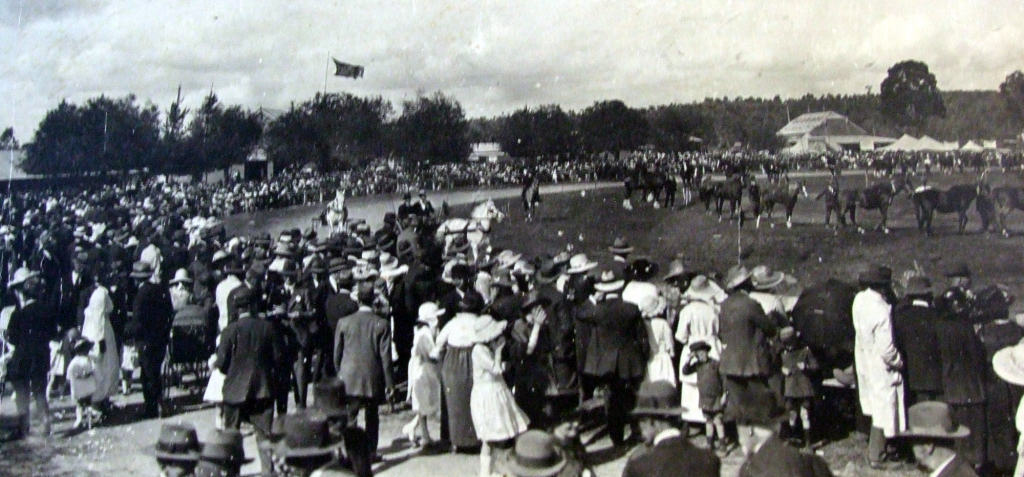 The first problem faced was how to deal with clashes with the local agricultural shows which so infuriated Junee the year before. Most of the Shows were held in September, so the Southern and Western P.A. Show society requested that the football competitions be completed by August. Given that the Maher Cup was such a money spinner, and its rules stipulated a 1 June to 30 September season, while in wheat belt towns like Barmedman, Wyalong and Temora many of the players were busy sowing grain into May, this was never likely to be put into practice. And it never was.
The first problem faced was how to deal with clashes with the local agricultural shows which so infuriated Junee the year before. Most of the Shows were held in September, so the Southern and Western P.A. Show society requested that the football competitions be completed by August. Given that the Maher Cup was such a money spinner, and its rules stipulated a 1 June to 30 September season, while in wheat belt towns like Barmedman, Wyalong and Temora many of the players were busy sowing grain into May, this was never likely to be put into practice. And it never was.
The second annual South Western Rugby League (Group 9) meeting was held at Cootamundra in March. Tom O’Farrell was re-elected president and Glen Evans of Cootamundra replaced Fred Cahill. It was decided to commence the season earlier in order to have trial matches to select the Country Week representative team, as well as to try to finish up before the heart of the Show season. However it was the now usual Maher Cup matters such as the 10 mile rule, Sydney referees and paid coaches that continued to dominate discussion.
The following Group 9 players were selected in the Southern Districts team: Aub Harris (Cootamundra), George Purcell (Cootamundra), Jim Lawrence (Barmedman), Ernie ‘Tiger’ Turner (Junee), Gordon Hinton (Cootamundra), Jack Kingston (Cootamundra), Dadie Quinlan (Cootamundra) and Rus Hutchinson (Wagga). Eric Weissel had moved to Temora and in order to protect its treasured asset it was decided not to make its players available for Country Week. Southern beat South Coast 11-5 but lost 5-0 to Western Districts.
The crack Temora team collected various challenge cups but lost their only Maher Cup challenge in July before a record Cootamundra crowd, in a year of record crowds as Cup fever reached renewed intensity. Young under Teddy Taplin, and Gundagai led by legendary international Charles ‘Chook’ Fraser, both wrested the Maher Cup and had decent runs. The Cootamundra team, which had dominated the Maher Cup since the end of 1922 was beginning to unravel without Weissel. Phil Regan in his sixth year coaching the blue and whites resigned in August leaving a quarrelsome and divided bunch.
1928 was a great year for Group 9. The excitement around the Maher Cup now seemed more like a frenzy. Rugby League matches were the talk of the towns, the villages and farmer’s rural pubs. At the start of the season the town of Cootamundra received a wonderful bonus, it’s second visit from an English tourist team. Group 9 drew 14-14 with this team: Bill ‘Chips’ Phillips (Coota), Reg Maker (Temora), Laurie Smith (Barmedman), Sid Hall (Young), Tom English (Wagga), Eric Weissel (Temora – captain), Norm ‘Latchem’ Robinson (Coota), Neville Beegling (Tumut), Leo Curran (Temora), Gordon ‘Norker’ Torpy (Coota), Bill Brogan (Wyalong), Gordon Hinton (Coota) and Jack Kingston (Coota). The crowd of 7,000 well exceeded Coota’s regular population.
Bill Flanagan of Cootamundra replaced Tom O’Farrell as president at the Group 9 AGM. The focus was on the Group taking a bigger role in the management of challenge cups and particularly in settling the growing number of disputes. As the game was becoming semi-professional and the economic benefits to local businesses of a successful cup run substantial, so was the importance of winning, by hook or by crook.
A widespread matter of concern was Cootamundra’s rewriting of the Maher Cup rules when they won the cup outright at the end of 1923. In particular the 10 mile residency limit. Gundagai were aggrieved that Gerry Crowe of Gobarralong was excluded from their team due to his farm’s distance from the town, although there was clearly no town closer. So this season a process to grant such players a special permit was implemented. However the distance clause would still cause serious friction later in the year and beyond. As well Cootamundra reserved the right to play the first and last challenges in any year where they had lost the Cup; were in charge of settling Cup disputes – even when they were an involved party; and were generally felt to dominate the affairs of Group 9 with the president, secretary and treasurer all being drawn from that town.
The ultra competitive nature of Group 9 was reflected in a still growing expenditure on captain-coaches. Cootamundra recruited Norm ‘Latchem’ Robinson from Balmain at £12, Gundagai still had ‘Chook’ Fraser and Temora Eric Weissel, Bill Brogan coached Wyalong, Keith Ellis from Newtown made £8 per week plus wages from a railway job at Junee, Young had J.K. McMahon from Glebe, Harry Caples from Easts made Wagga competitive for £19 a week, and Tumut engaged international ‘Snowy’ Marsh for a bargain at £7.
In April in preparation for Country Week Group 9 defeated Group 8 by 14-2. The team was: Frank Blundell (Gundagai), Reg Maker, (Temora), Phil Freestone (Gundagai), George Purcell (Cootamundra), Jim Lawrence (Barmedman), Eric Weissel (Temora, captain), Ernie Turner (Junee), Jack Kingston (Cootamundra), Vince Kane (Junee), Gordon Hinton (Cootamundra), Jim Keen (West Wyalong), Eddie Locke (Wagga) and Rus Hutchison (Wagga). Those in italics also went on to represent Southern Districts.
The format of Country Week was changed so that each district played a Sydney side. Southern met Eastern Suburbs and were beaten 20-12. However a Group 9 selection returned in July to again play the Sydney competition leaders and won 23-19. The Country team beat the City 35-24. Three Group 9 players: Weissel, Kingston and Gundagai’s ‘Bluey’ Freestone were selected to play for Australia.
Temora took up the idea earlier championed by Fred Cahill of Young, to run a points table style competition among Group 9 teams. It was again deferred.
The Maher Cup draw was always a matter of chance and in 1928 three top Group 9 teams, Temora, Young and Tumut were unsuccessful in getting a challenge slot, while Cowra, Grenfell and Canowindra from Group 11 did, the latter trouncing Cootamundra – only to be thwarted by the dubious application of the ’10 mile rule’. The hypocracy was apparent to everyone. While a paid player who would only remain in Cootamundra for the football season was considered a resident, a hard-working farmer struggling on a soldier-settlement block 11 miles from the nearest town was not.
The call was to limit the Maher Cup to only Group 9 teams rather than ‘any side based within 100 miles of Cootamundra’.
At the AGM Temora again commented on the “ceaseless chasing of cups” and considered that “competition matches are more desirable than cup matches”. On the other side of the argument treasurer Charles Inson from Cootamundra claimed that cup matches “had made football in the south”, while Tumut felt that it was located too distant from other centres for regular competition football. The vote was 9 all with the president casting his vote against. However some competition football looked liked an inevitability in 1930.
There was renewed interest in Country Week as a stepping stone for players to represent the State as well as to strive for a place in the Australian team to travel to Britain. The trial match process was rigorous and like no other year the Group 9 representatives were keenly anticipated from a most talented pool. The final selection was: Bob Boyd (Temora), Reg Maker (Temora), ‘Bluey’ Keyes (Gundagai), ‘Snowy’ Marsh (Tumut), Len Cooper (Barmedman), Eric Weissel (Temora), George Rolfe (Young) (although George Purcell from Coota replaced him at the last minute), Jack Kingston (Cootamundra), Jack James (Cootamundra), ‘Bluey’ Forbutt (Tumut), Charlie Cornwall (Temora), Henry McGuire (Gundagai) and Gordon Hinton (Cootamundra). The Group 9 team overwhelmed Group 8 by 37-10. Southern Districts then defeated Far North Coast 28-5 but fell to St George 17-8 (for whom Gundagai native ‘Bluey’ Freestone scored two tries). Weissel, Kingston and Charlie Cornwall were selected for Country. Weissel and Kingston went to England with the Kangaroos, as did Group 9-bred players Bill Brogan, George Treweeke and Cec Fifield.
At a June meeting the competition versus cup issue resulted in another tied vote the president casting for the status quo, much to the indignation of absent Temora and Young representatives who understood that there was to be a specific meeting exclusively on this matter. The next month president Bill Flanagan resigned over the resultant discord.
Whereas it was expected that Fred Cahill of Young would challenge for the position he too resigned basically over the dominance of Cootamundra within Group 9 and Coota’s abuse of its powers in a protest regarding well-travelled professional footballer ‘Chips’ Phillips. The Phillips case produced probably the first instance of a rising against the Maher Cup as a corrupting influence. As the Junee Southern Cross editorialised “It is quite obvious that in order to retain this trophy, there are certain clubs in the group, the members of which will descend to anything to retain it.” The Sydney Sportsman declared Cootamundra’s disregard for the rules as ‘bushranging‘.
In August the NSW Rugby League banned Phillips for 12 months and Cootamundra were disqualified in all matches they had played him. As well they were ordered to forfeit any cups currently held for which Phillips had represented them. A month of further wrangling followed with the southwest fans starved of their Maher Cup diet. There was general uproar in Cootamundra against the NSWRL – even a threat to return to playing Rugby Union, as well as some sympathy from many Group 9 teams and officials over the City’s meddling. At a fiery Group 9 meeting on 16 August Fred Cahill of Young re-emerged. He read the anti-Coota, anti-Sydney mood, and masterfully gained support of most Group 9 representatives. The Cootamundra based president, secretary and treasurer all resigned. Cahill was elected president with Gundagai securing the secretarial position. He took it upon Group 9 to appeal the severity of the Phillips ruling and sorted the complexity of current Maher Cup protests where three clubs – Cootamundra, Junee and Barmedman – were all claiming to be the rightful holders…and the hope of a competition in 1930 was revived.
When finally in September the Maher Cup resumed with Junee v Cootamundra before 4,000 spectators the feelings were so intense that a police inspector addressed the players prior to the match, concerned as much with potential violence off the field as on. As the defeated Cootamundra brigade were heading home from Junee station they were pelted with eggs and gravel.
With Group 9 entering the Depression decade Temora representative Mr Carr could state without irony that the ‘Maher Cup was a business matter, not a sporting matter’. The Young versus Cootamundra hostility was now welded on, and the Cootamundra club had alienated almost all the other teams by both their enviable success and abrogation of the principles of fair play. However there was near unity in Group 9 on one thing – that NSW Rugby League was being run by city interests and had little understanding of the peculiarly intense football world of the southwest.
In the last Maher Cup of the decade the tiny wheat lumper’s village of Barmedman demolished once almighty Cootamundra before a crowd some six times the usual population, on a ground described by sophisticates used to the SCG and manicured Fisher Park as a ‘ploughed paddock infested by rabbits‘. In an ‘up yours’ celebration of rusticity Barmedman released a colony of the furry creatures to scatter in all directions at the start of the match.
Cootamundra was to lose its dominance for almost twenty years, but it wasn’t until 1933 that Maher Cup mania had subsided sufficiently for a proper Group 9 competition to be established.
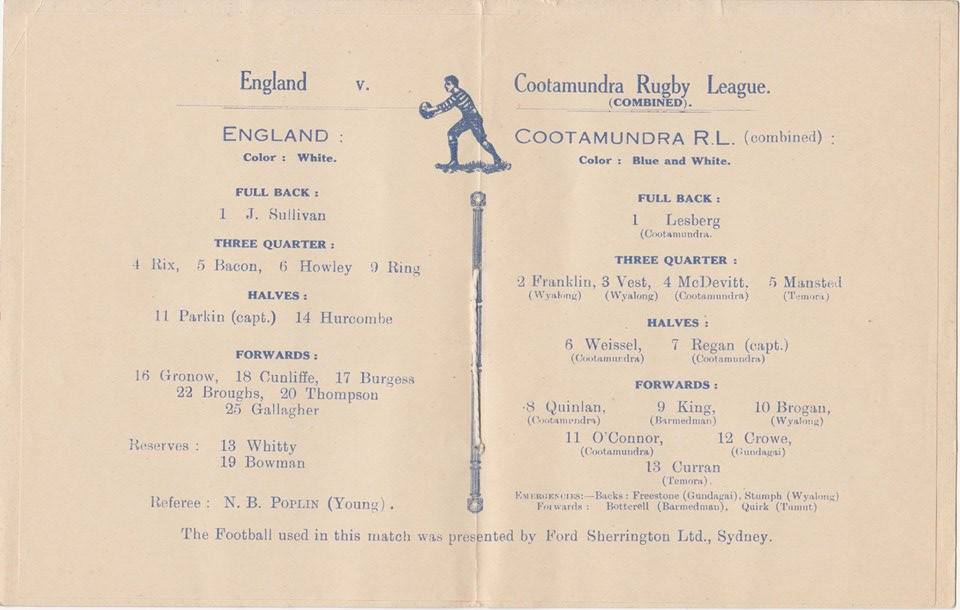
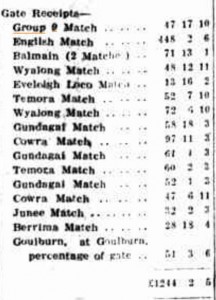
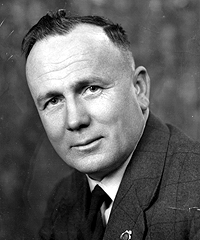
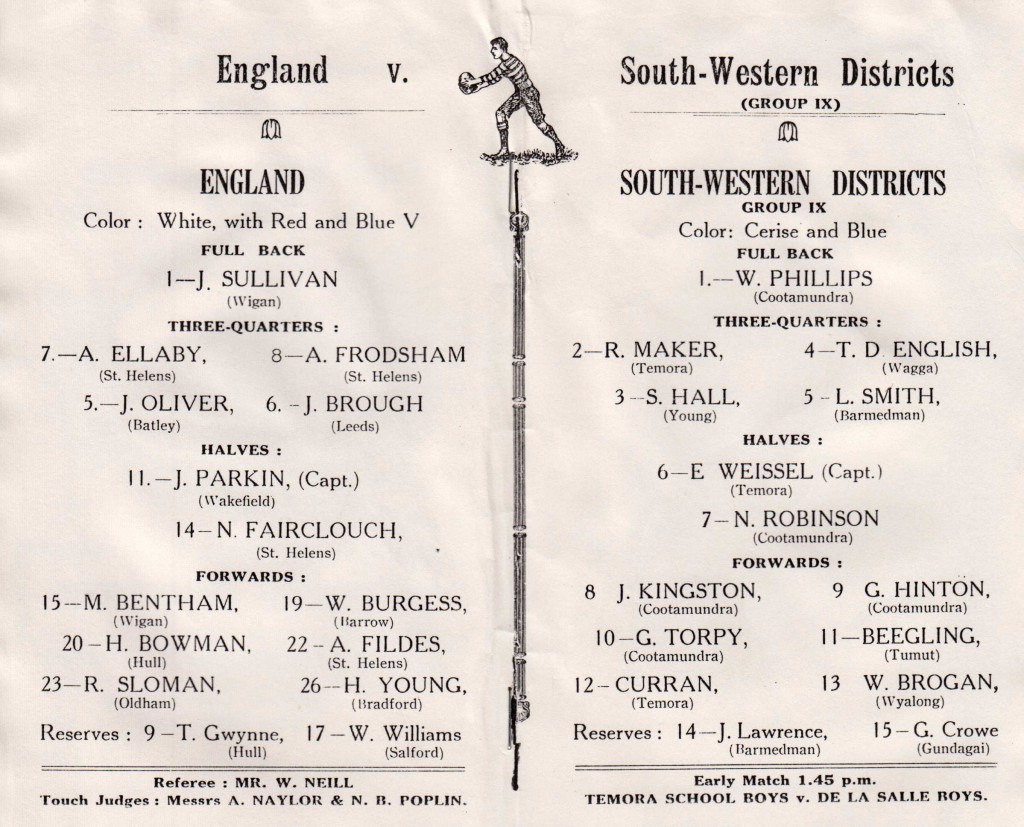
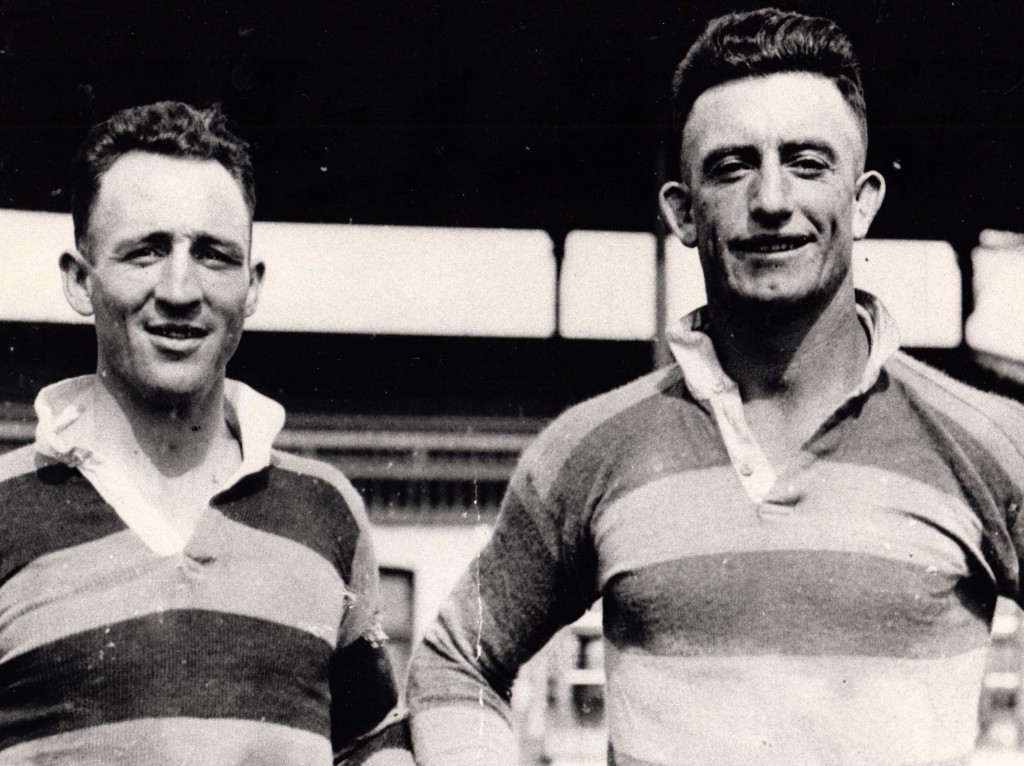

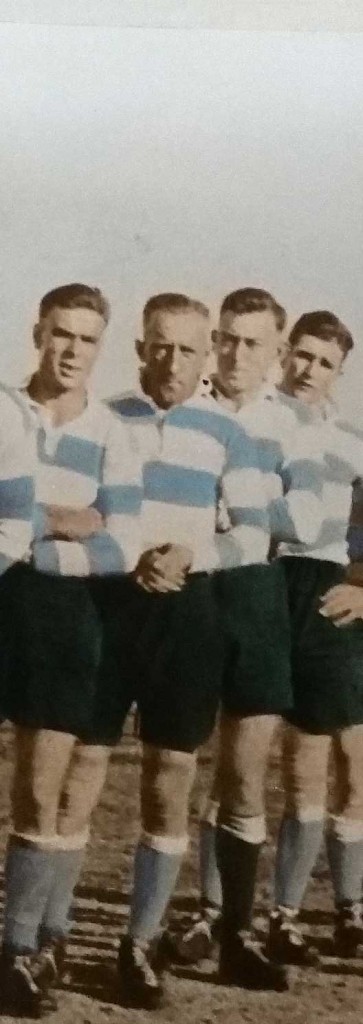



Vrry interesting lookimg forward for more.
Thank you, Neil Pollock for this very interesting history of the growth of Rugby League in the south-west. Fred Cahill was renowned for his tenacity and I was not surprised to find he ended up being president of Group 9. Fred was a journalist on the Young Witness before he entered politics and my father, Vincent Giuliano, who was also a journalist on the local paper, often remarked about Fred’s coolness under pressure and his organizational ability. A veteran of the First World War and an ANZAC to boot, after his successful career as a politician, Fred organised escorted tours to Gallipoli and popularized the annual pilgrimage to that famous war site, that has swelled to thousands today.
Fred Cahill will feature even more in the 1930s. Another post that features him: http://mahercup.com.au/blog/2014/09/18/temora-v-west-wyalong-ad-infinitum-1933/
I’ve been told that the longer he was in parliament the more he lost contact with Young and became more a city politician and that he was largely forgotten by the people of the southwest slopes by the time he passed away, in contrast to Billy Sheahan in the electorate next door who always fostered local causes to the end. Perhaps an unfair contrast.
Question:
Did Peak Hill or a nearby town, ever play for the
Maher Cup ?
No. The nearest town to peak hill was canowindra who played just two matches.
my father KEITH GODFREY I believe played for MANILDRA about 1930 in the Maher cup. I wonder if you have any information.
Manildra never played for the Maher Cup Ian